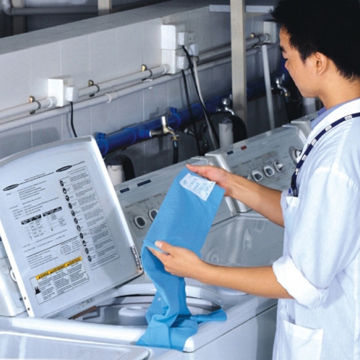Product Development
• Retailers will either elect to buy branded products, develop their own private label or carry a mixture of the two.• Designers must develop the right product at the right price
Private Label Product Development
• grew from the need for retailers to buy exactly what is required for their customer and market.• increasingly collaborating with designers to create private label brands, ie, Dana Buchman (Kohl's), Sonia Rykiel (H&M), Alexander McQueen (Target)
Developing Initial Concepts
• Designers begin by creating black and white showing silhouettes of garments in the range• Mood boards are uses to provide visual indication of color, fabric, and silhouettes for each look
• Boards and initial sketches are edited and adapted many times
Developing the Range Plan
• Rough ideas are turned into "Stories" or mini-collection• They are grouped together by color and inspiration and given names
• Within each seasonal range there can be as many as 12 stories
The Product Mix
• The product mix is loosely base on the Marketing Mix - the four (or seven P's)The Range Plan
• The plan contains complete details of all styles, lead times for each style and how many phases are to exist.• Timing includes the introduction of new color statements and products
• Created by teams consisting of designers, buyers and merchandisers
• Determine the balance within the range
BASICS OR CORE ITEMS
FASHION ITEMS
Sampling
Performance Testing
• Specialist testing
READ: CHAPTER TWO - PRODUCT DEVELOPMENT
HOMEWORK: Bring in 4-6 ROUGH sketches for your line
http://www.youtube.com/watch?v=735uH-zCgyw















The presence of software implies a programmable component in the electronics. This is not a required capability in the microsystem, but it can add significant value. For example, higher-level, complex functions may be partitioned to the software because complex algorithms are more cost-effectively embodied in software rather than in hardware. For example, an accelerometer detects a bump, and the output of the accelerometer has a peak. That peak can be identified by either hardware or software methods, but it is typically a larger engineering effort to develop peak identification in hardware. In addition, a software embodiment can do sophisticated peak analyses more cost-effectively than hardware, such as to identify local versus global peaks, measure peak widths, measure peak rise and decay rates, and many other useful analyses of signal peaks. what is thought leadership
ReplyDeleteDie-level integrated systems assemble the MEMS, the electronics, and sometimes even the packaging, all at the die level. This approach creates the most compact product, measuring as small as a few millimeters on a side. thought leadership strategies
ReplyDelete